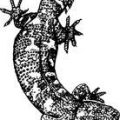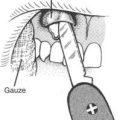SERIOUS LUNG DISORDERS
ASTHMA
Asthma is a disease of the lungs that involves episodes of coughing, shortness of breath, wheezing, and increased secretions in the bronchi. Generally, most people will know that they are prone to asthma attacks; however, a first-time episode may occur during an allergic reaction, on exertion or exposure to cold, or as a result of emotional stress. In most cases, the mechanism is the same: narrowing and spasm of the small airways, with increased mucus production.
Treatment For Severe Asthma
1. Administer oxygen (see page 431) by face mask at a rate of 10 liters per minute. If cold weather precipitated the attack, try to get the victim into a warmer climate.
2. Administer an inhaled (aerosol or “micronized”) bronchodilator. Bronchodilators (airway openers) are drugs that carry the advantages of minimal side effects and direct delivery to the site of action. They are available in metered-dose handheld nebulizers (“mistometers”) from which the victim inhales therapeutic puffs. An excellent drug for an acute attack is albuterol (Ventolin). The dose for an adult is two to six puffs initially, followed by two to four puffs every 3 to 6 hours. A mild to moderate asthma episode in an adult can frequently be controlled with an inhaled bronchodilator alone. Young children have difficulty using the inhaler, and therefore may require administration of the drug orally in pill or liquid form. The most effective technique for metered-dose inhalation appears to be discharging the aerosol through a spacer clamped between the lips. The drug should be released (canister pressed down or “triggered”) at the beginning of a deep inspiration. After inhalation, the recipient should attempt to hold his breath for 10 seconds.
3. Administer epinephrine if the victim remains in severe distress after inhalation of a bronchodilator. Epinephrine is a powerful bronchodilator that is injected subcutaneously (see page 474) as an aqueous solution of 1:1,000 concentration in a dose of 0.3 to 0.5 mL for an adult and 0.01 mL/kg of body weight for a child (not to exceed 0.3 mL). For weight estimation, 1 kg equals 2.2 lb. The drug is not recommended for those known to have coronary artery heart disease (angina or recent heart attack) or older than 45 years. Epinephrine is the treatment of choice for a severe asthma attack in a child. When administering an injection, never share needles between people. Epinephrine is available in autoinjectors (EpiPen and Twinject: see page 67) for administration to both adults and children.
4. Administer a corticosteroid. Asthma is often accompanied by inflammation of the airways. The victim should be dosed with prednisone tablets at the earliest possible opportunity, because the onset of their action is delayed by 4 to 6 hours. The dose for an adult is 50 to 80 mg, tapered over 10 days (for example, give 80 mg on days 1 and 2; 60 mg on days 3 and 4; 40 mg on days 5 and 6; 20 mg on days 7 and 8; and 10 mg on days 9 and 10). The initial dose for a child is 1 mg/kg (1 kg = 2.2 lb) of body weight, also tapered over 10 days. If a person with asthma improves greatly (e.g., feels completely normal) after using epinephrine or an inhaled bronchodilator (or both), steroid administration is not absolutely necessary, but in general, it is a highly helpful intervention. If a victim is carrying his own steroid inhaler, have him use it. Similarly, if he is carrying his own ipratropium, this can be self-administered.
5. A person with asthma who is in more than minimal distress or who does not achieve great improvement with these basic pharmacological maneuvers should be transported rapidly to the nearest medical facility. Great care should be taken to keep him well supplied with oxygen and as exertion-free as possible.
PULMONARY EMBOLISM
The most common sources of the original blood clots are the veins of the pelvis or legs (“thrombophlebitis”: inflammation of the veins with blood clots). Predisposing factors to thrombophlebitis include dehydration, underlying disease of the veins (such as varicose veins), injuries, cancer, medications (such as birth control pills), injury, obesity, and prolonged immobility (see page 291). There are hereditary genetic factors as well, such as the presence of factor V Leiden thrombophilia, which results in a tendency to form clots in small blood vessels.
Symptoms of pulmonary embolism include sudden sharp chest pain (occasionally worse with deep breathing), cough (occasionally with blood), shortness of breath, increased rate of breathing, light-headedness, and increased or irregular heart rate. The victim may develop a fever. It is often difficult to distinguish pulmonary embolism from pneumonia (see page 48). If the clot is very large, the victim may collapse and die rapidly.
If a person develops symptoms that may represent pulmonary embolism, he should be rushed to medical attention. If oxygen (see page 431) is available, it should be administered by face mask at a flow rate of 10 liters per minute. If the victim can swallow purposefully, administer an aspirin tablet (325 mg) every 24 hours. If a pulmonary embolism is diagnosed, the patient will be treated with a rapid-acting anticoagulant (“blood thinner”), such as heparin or enoxaparin, while being started on a maintenance anticoagulant such as warfarin (Coumadin).
HEART FAILURE (OFTEN CALLED “CONGESTIVE HEART FAILURE”)
If a victim with known heart failure suddenly worsens, or if a previously healthy individual develops signs of heart failure (which may represent a new heart attack), he should be kept sitting up, unless he is more comfortable lying on his back. Administer oxygen (see page 431) by face mask at a flow rate of 10 liters per minute, and immediately carry him to medical attention. If the victim must travel under his own power, all exertion should be kept to a minimum. If the victim is awake and alert, you can administer nitroglycerin 0.4 mg by tablet or spray under the tongue. Don’t use nonsteroidal antiinflammatory drugs (NSAIDs) in persons with heart failure.
If traveling at high altitude, suspect high-altitude pulmonary edema (see page 339).
CHRONIC OBSTRUCTIVE PULMONARY DISEASE
Chronic obstructive pulmonary disease (COPD) refers to a number of diseases suffered by people who have exposed their lungs to long-term insults, particularly cigarette smoke. Chronic bronchitis (infection, inflammation, or bronchospasm—see page 205) or emphysema (scarring that leads to lack of elasticity, overinflation, or lung collapse) are the most common subsets of COPD. People with COPD have poor respiratory reserves, and cannot tolerate strenuous exercise or extremes of environment. A victim of COPD suffers attacks of shortness of breath and coughing similar to asthma, but can get into serious trouble much faster because of underlying debilitation. The earliest signs of respiratory fatigue should be heeded, and evacuation to a restful situation and physician evaluation are high priorities.
If a person with COPD shows signs of bronchitis (see page 205) or pneumonia (see below), the first-line antibiotic should be trimethoprim-sulfamethoxazole, amoxicillin, doxycycline, tetracycline, azithromycin, clarithromycin, levofloxacin, or sparfloxacin. Second-line antibiotics include ciprofloxacin, cefixime, cefprozil, ofloxacin, and amoxicillin-clavulanate.
PNEUMONIA
Pneumonia is an infection of the lung(s) characterized by combinations of fever, shaking chills (often with chattering teeth), cough, painful and difficult breathing, chest pain, weakness, and the expectoration of discolored (red, green, yellow, brown) phlegm. Pneumonia may evolve from bronchitis (see page 205) or arise independently. In toddlers or young children, rapid breathing, abdominal pain, poor appetite, and vomiting may be the presenting complaints.
Treatment for Pneumonia
1. If respiratory difficulty is extreme, administer oxygen (see page 431) at a flow rate of 5 to 10 liters per minute by face mask.
2. Administer an antibiotic. Although many different bacteria, viruses, mycoplasmas, fungi, and other agents can cause pneumonia, the organisms most commonly acquired outside the hospital (“community acquired”) respond to the following drugs (for people under age 60 years): azithromycin (500 mg the first day, then 250 mg a day for 4 more days), clarithromycin (500 mg twice a day for 10 days), doxycycline (100 mg twice a day for 10 days), or levofloxacin (500 mg a day for 10 days). If one of these is not available, use cefdinir (300 mg twice a day), cefpodoxime (400 mg twice a day), cefprozil (500 mg twice a day), cefuroxime axetil (500 mg twice a day), or amoxicillin-clavulanate (875 mg twice a day). A person over age 60 years or who is debilitated should be treated with levofloxacin or amoxicillin-clavulanate. For a child 4 months to 6 years of age, use amoxicillin-clavulanate, azithromycin, erythromycin-sulfisoxazole, or cefuroxime axetil. For an infant 3 weeks to 3 months of age, use erythromycin or azithromycin.
Serious lung problems related to specific environmental conditions are discussed in the sections on altitude illness (see page335), drowning (see page 406), and smoke inhalation (see page 115).




